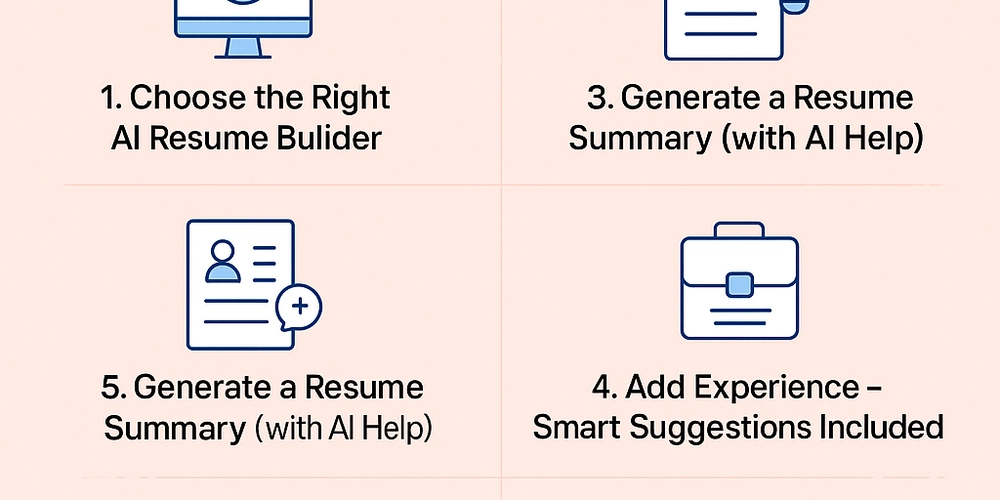Quantum vs. Traditional Algorithms in Financial Risk Management
Managing financial risks is no walk in the park. Financial institutions find themselves navigating through a labyrinth of complex markets that change faster than you can say "market volatility." For years, traditional algorithms have been the reliable tools in the risk management toolkit. They've crunched numbers and provided insights, helping businesses make sense of uncertainties. But here's where things get interesting: quantum computing is stepping into the spotlight, ready to redefine the game. Imagine having a tool that can analyze vast amounts of data at lightning speed, uncovering patterns and insights that traditional algorithms might miss. Quantum computing isn't just an upgrade; it's a whole new way of thinking about risk management. In this blog, we’ll explore how quantum computing and traditional algorithms stack up against each other in the world of financial risk. We’ll dive into their performance in critical areas like data security, speed, and accuracy, while also looking at how they can work hand-in-hand with advanced technologies like artificial intelligence and machine learning. Buckle up as we take a closer look at this exciting evolution in financial risk management! Traditional Algorithms The Current Backbone of Financial Risk Management For decades, traditional algorithms have played an integral role in financial risk management. These algorithms rely on deterministic models using a set of predefined rules and mathematical formulas to assess risks. Typically, these models take into account historical data, market trends, and statistical probability to predict future financial outcomes. Traditional risk models can vary in complexity, ranging from simple linear regression to more intricate models like the Monte Carlo simulation. While traditional algorithms have proven to be reliable and effective, they come with limitations. Let’s explore how they work and where they fall short: Limited Computational Power Traditional algorithms depend on classical computing, where data is processed sequentially. This approach works fine for basic calculations but struggles to keep up with large datasets or when complex scenarios arise, such as calculating risk across multiple markets and variables simultaneously. Computing Risk Management: Traditional algorithms often struggle when it comes to managing computing risks in highly volatile markets. They can only process so much data at a time and often oversimplify real-world financial conditions, leading to models that don’t fully capture the intricate nature of market risks. Data Security: With increasing cyber threats, data security has become a top priority for financial institutions. Traditional algorithms can implement basic encryption methods to protect sensitive information. However, their susceptibility to modern hacking methods is becoming a concern. As hackers become more sophisticated, quantum-based encryption might be the future safeguard financial firms need. Speed and Efficiency: Traditional algorithms take time to process and analyze large data sets. In high-frequency trading or real-time risk assessment, speed is critical, and traditional computing methods can lag behind. Quantum Computing : A Game-Changer in Financial Risk Management Quantum computing offers a fundamentally different approach. Unlike classical computers, which use bits to represent data as 0s and 1s, quantum computers use quantum bits (qubits). These qubits can represent both 0 and 1 simultaneously, thanks to a phenomenon known as superposition. This allows quantum computers to process vast amounts of information in parallel, making them exponentially more powerful than their classical counterparts. In addition to their ability to process information in parallel, quantum computers also leverage another phenomenon called entanglement. This allows qubits to be interconnected in such a way that the state of one qubit can instantly affect the state of another, regardless of the distance between them. This property enables quantum computers to perform complex calculations and simulations at a speed and scale that are currently unattainable with classical computers. As researchers continue to explore and harness the potential of quantum computing, the implications for fields such as cryptography, drug discovery, and optimization problems are vast and promising. So, how does this apply to financial risk management? Processing Complex Data Efficiently: One of the main benefits of quantum computing in financial risk management is its ability to handle complex datasets more efficiently. Quantum computers can analyze multiple variables and scenarios simultaneously, something that would take traditional algorithms far longer to accomplish. This speed advantage allows financial institutions to make quicker, more informed decisions in dynamic markets. More Accurate Risk Predictions: By utilizing

Managing financial risks is no walk in the park. Financial institutions find themselves navigating through a labyrinth of complex markets that change faster than you can say "market volatility." For years, traditional algorithms have been the reliable tools in the risk management toolkit. They've crunched numbers and provided insights, helping businesses make sense of uncertainties.
But here's where things get interesting: quantum computing is stepping into the spotlight, ready to redefine the game. Imagine having a tool that can analyze vast amounts of data at lightning speed, uncovering patterns and insights that traditional algorithms might miss. Quantum computing isn't just an upgrade; it's a whole new way of thinking about risk management.
In this blog, we’ll explore how quantum computing and traditional algorithms stack up against each other in the world of financial risk. We’ll dive into their performance in critical areas like data security, speed, and accuracy, while also looking at how they can work hand-in-hand with advanced technologies like artificial intelligence and machine learning. Buckle up as we take a closer look at this exciting evolution in financial risk management!
Traditional Algorithms
The Current Backbone of Financial Risk Management
For decades, traditional algorithms have played an integral role in financial risk management.
These algorithms rely on deterministic models using a set of predefined rules and mathematical formulas to assess risks. Typically, these models take into account historical data, market trends, and statistical probability to predict future financial outcomes. Traditional risk models can vary in complexity, ranging from simple linear regression to more intricate models like the Monte Carlo simulation.
While traditional algorithms have proven to be reliable and effective, they come with limitations. Let’s explore how they work and where they fall short:
Limited Computational Power
Traditional algorithms depend on classical computing, where data is processed sequentially. This approach works fine for basic calculations but struggles to keep up with large datasets or when complex scenarios arise, such as calculating risk across multiple markets and variables simultaneously.
Computing Risk Management:
Traditional algorithms often struggle when it comes to managing computing risks in highly volatile markets. They can only process so much data at a time and often oversimplify real-world financial conditions, leading to models that don’t fully capture the intricate nature of market risks.
Data Security:
With increasing cyber threats, data security has become a top priority for financial institutions. Traditional algorithms can implement basic encryption methods to protect sensitive information. However, their susceptibility to modern hacking methods is becoming a concern. As hackers become more sophisticated, quantum-based encryption might be the future safeguard financial firms need.
Speed and Efficiency:
Traditional algorithms take time to process and analyze large data sets. In high-frequency trading or real-time risk assessment, speed is critical, and traditional computing methods can lag behind.
Quantum Computing : A Game-Changer in Financial Risk Management
Quantum computing offers a fundamentally different approach. Unlike classical computers, which use bits to represent data as 0s and 1s, quantum computers use quantum bits (qubits). These qubits can represent both 0 and 1 simultaneously, thanks to a phenomenon known as superposition. This allows quantum computers to process vast amounts of information in parallel, making them exponentially more powerful than their classical counterparts.
In addition to their ability to process information in parallel, quantum computers also leverage another phenomenon called entanglement. This allows qubits to be interconnected in such a way that the state of one qubit can instantly affect the state of another, regardless of the distance between them.
This property enables quantum computers to perform complex calculations and simulations at a speed and scale that are currently unattainable with classical computers. As researchers continue to explore and harness the potential of quantum computing, the implications for fields such as cryptography, drug discovery, and optimization problems are vast and promising.
So, how does this apply to financial risk management?
Processing Complex Data Efficiently:
One of the main benefits of quantum computing in financial risk management is its ability to handle complex datasets more efficiently. Quantum computers can analyze multiple variables and scenarios simultaneously, something that would take traditional algorithms far longer to accomplish. This speed advantage allows financial institutions to make quicker, more informed decisions in dynamic markets.
More Accurate Risk Predictions:
By utilizing quantum algorithms, financial institutions can better assess and predict risk. Quantum computing's ability to run multiple simulations at once makes it possible to produce more accurate risk models, even when dealing with unpredictable market fluctuations. Quantum algorithms could potentially uncover risks that traditional methods might overlook.
Advancements in Data Security:
Data security is an area where quantum computing could dramatically improve risk management. Quantum encryption, which uses the principles of quantum mechanics, is virtually unbreakable. Quantum cryptography can detect any interference or eavesdropping on communication channels, making it a much safer alternative to traditional encryption techniques. As financial institutions handle increasingly sensitive data, quantum encryption could be the key to safeguarding it.
Computing Risk Management with Quantum Power:
Traditional algorithms are great for linear problems, but when it comes to managing complex market risks that involve numerous factors, quantum computing holds a distinct advantage. Quantum algorithms can process data at unprecedented speeds, allowing them to forecast risks more accurately and provide deeper insights into financial trends.
Integration with Artificial Intelligence and Machine Learning:
As financial institutions continue to integrate artificial intelligence (AI) and machine learning (ML) into their risk management systems, the combination of quantum computing with AI and ML could lead to groundbreaking improvements. Quantum computers can help enhance AI algorithms, providing better predictions and enabling more sophisticated decision-making. This will help institutions predict risks faster and more accurately.
Why Expertise is Still Critical?
While quantum computing holds great promise, it’s important to remember that expertise is still critical in managing financial risks. Although quantum computing can process and analyze vast amounts of data, human oversight is essential in understanding the data, fine-tuning models, and applying industry-specific insights.
Machine learning and artificial intelligence can enhance the capabilities of quantum algorithms, but they need to be trained on accurate data. The importance of understanding the nuances of financial markets and contextualizing the information provided by quantum algorithms can’t be overstated. This is why expertise in financial risk management is still highly valued even as technology continues to evolve.
The Future of Financial Risk Management
As quantum computing continues to evolve, its impact on financial risk management will likely grow. While traditional algorithms have served the industry well for decades, their limitations are becoming more apparent in today’s fast-paced financial environment. Quantum computing, with its ability to process complex data quickly and accurately, holds the potential to revolutionize risk management, making it possible for financial institutions to stay ahead of market changes, reduce risks, and improve decision-making processes.
The Final Takeaway
The debate between traditional algorithms and quantum computing in financial risk management is far from over. While quantum computing is still in its early stages, its potential to transform the way risks are calculated and mitigated is undeniable. Financial institutions that adopt quantum computing early will likely have a competitive edge, especially when it comes to complex risk management scenarios.
At Levitation, we believe in the power of technology to drive financial innovation. We are committed to helping businesses harness the latest advancements in quantum computing, machine learning, and artificial intelligence to improve risk management processes and secure their financial future. The future of risk management is not just about staying ahead it’s about embracing technology that can transform the way we think about risk entirely.
As the world of finance becomes more interconnected and data-driven, quantum computing in financial risk management will undoubtedly play a leading role in shaping the future of the industry. Stay tuned, because the financial world as we know it is on the cusp of a revolution.




























![[Webinar] AI Is Already Inside Your SaaS Stack — Learn How to Prevent the Next Silent Breach](https://blogger.googleusercontent.com/img/b/R29vZ2xl/AVvXsEiOWn65wd33dg2uO99NrtKbpYLfcepwOLidQDMls0HXKlA91k6HURluRA4WXgJRAZldEe1VReMQZyyYt1PgnoAn5JPpILsWlXIzmrBSs_TBoyPwO7hZrWouBg2-O3mdeoeSGY-l9_bsZB7vbpKjTSvG93zNytjxgTaMPqo9iq9Z5pGa05CJOs9uXpwHFT4/s1600/ai-cyber.jpg?#)













































































































































![[The AI Show Episode 144]: ChatGPT’s New Memory, Shopify CEO’s Leaked “AI First” Memo, Google Cloud Next Releases, o3 and o4-mini Coming Soon & Llama 4’s Rocky Launch](https://www.marketingaiinstitute.com/hubfs/ep%20144%20cover.png)




































































































































































































![Rogue Company Elite tier list of best characters [April 2025]](https://media.pocketgamer.com/artwork/na-33136-1657102075/rogue-company-ios-android-tier-cover.jpg?#)








































































_Andreas_Prott_Alamy.jpg?width=1280&auto=webp&quality=80&disable=upscale#)




























































































![What’s new in Android’s April 2025 Google System Updates [U: 4/18]](https://i0.wp.com/9to5google.com/wp-content/uploads/sites/4/2025/01/google-play-services-3.jpg?resize=1200%2C628&quality=82&strip=all&ssl=1)










![Apple Watch Series 10 Back On Sale for $299! [Lowest Price Ever]](https://www.iclarified.com/images/news/96657/96657/96657-640.jpg)
![EU Postpones Apple App Store Fines Amid Tariff Negotiations [Report]](https://www.iclarified.com/images/news/97068/97068/97068-640.jpg)
![Apple Slips to Fifth in China's Smartphone Market with 9% Decline [Report]](https://www.iclarified.com/images/news/97065/97065/97065-640.jpg)



































































































































